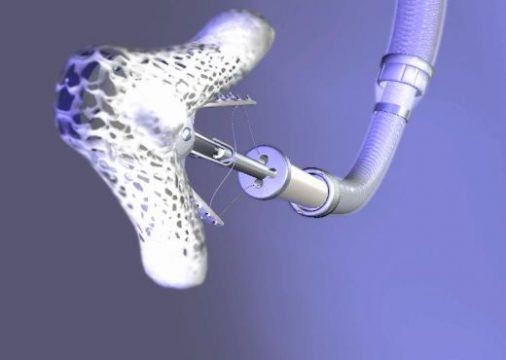The EVEREST II trial has shown the MitraClip has similar mortality rate to that of surgery and, on the other hand, we are well aware that residual mitral regurgitation (MR) is associated with a strong negative impact. However, research has shown little about transvalvular gradient after MitraClip and what it entails.

268 patients receiving MitraClip were enrolled. Pressure in the left atrium and left ventricle were measured. Researchers looked at invasively determined mitral valve pressure gradient (MVPG) both invasively and echocardiographically directly after deployment. 200 patients met research criteria.
By the end of the procedure, there were two groups: 150 patients with an invasively determined MVPG ≤5 mmHg and 50 with >5 mmHg.
Combined primary end point was all cause mortality, implant failure, mitral valve surgery, left ventricular assist device and reintervention.
There were no differences between the groups. Mean age was 77, all patients presented functional class II-IV, cardiac failure, increased pulmonary hypertension type B, functional MR (in most cases), 39% ejection fraction and EUROScore log 20%.
The number of MitraClip implanted was slightly higher in patients with >5 mmHg gradient. In addition, complications rate related to the procedure was low.
Read also: New-Generation ACURATE Neo2.
There was a linear correlation between resulting mitral valve area <4 cm2 and increase residual >5 mmHg gradient.
At follow up, all-cause mortality after 1 and 2 years resulted 22% and 30% respectively; those presenting MR ≥2 suffered higher mortality rate.
Kaplan-Meier analysis showed increased MVPG (p=0.001) in excess of 5 mm Hg at implantation, and higher all-cause mortality (0.018), or for echocardiographically determined cutoff value 4.4 mm Hg.
Read also: MitraClip Reduces Renal Function Deterioration.
Predictors of bad evolution were increased residual MVPG >5 mm Hg (hazard ratio 2.3; 95% confidence interval: 1.4 to 3.8 p=0.002), age, B natriuretic peptide and the presence of mitral regurgitation >1.
Conclusion
Thorough assessment of implant quality is recommended, in addition to repositioning the MitraClip in cases of elevated elevated pressure gradient over the mitral valve.
Commentary
All prior analyses, except for this one, have assessed residual mitral regurgitation. Instead, this study has shown post MitraClip mitral valve stenosis is associated to a strong negative impact, even though it is associated with mitral regurgitation.
This is why we strongly recommend caution and thorough assessment when choosing to release the MitraClip, and obsessively looking into echocardiographic and invasive variables.

Dr. Carlos Fava.
Member of the Editorial Board of SOLACI.org.
Original Title: Elevated Mitral Valve Pressure Gradient After MitraClip Implantation Deteriorates Long-Term Outcomes With Severe Mitral Regurgitation and Severe Heart Failure.
Reference: Michael Neuss, et al. J Am Coll Cardiol Intv 2017;10:931-9.
Subscribe to our weekly newsletter
Get the latest scientific articles on interventional cardiology





